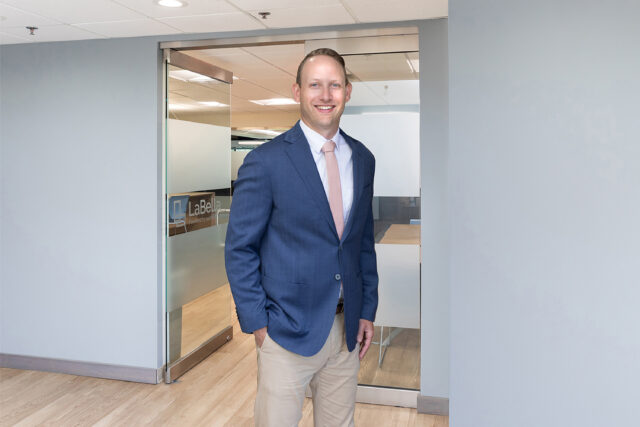Announcing LaBella’s New Multi-Modal Planning and Design Group!

The Multi-Modal Planning and Design Group is comprised of a team of experts in transportation engineering and planning. Their extensive knowledge will be instrumental in serving transit agencies, municipalities, and developers across the U.S. The team is led by Douglas Teator, PE, who joins LaBella with more than 18 years of experience. We sat down with Doug to discuss his new role and what the creation of this new group means for LaBella and our clients.
Can you briefly summarize your professional background and how your previous roles have prepared you for the position of multi-modal planning and design group director at LaBella?
I started as a transportation engineer after college, working on a variety of multi-modal projects involving pedestrian facilities, safety, and transit. My interest grew in understanding how projects reach the engineering phase, leading me to dig deeper into the planning phase of our work. This dual focus on planning and design allows us to determine what needs to be done and where at the planning level and then we can bring that into the design. A key aspect I appreciate as an engineer is developing costs and schedules for these needs and then pursuing strategic funding to make it a reality. This brings added value to our clients, particularly municipalities, by identifying and accessing available funding to address their transportation needs. Our focus on multi-modal transportation and our collaboration with our Planning team means we cover all aspects of urban planning and we can turn great plans into impactful projects.
How does the experience you bring complement and expand LaBella’s existing transportation services?
Our team brings dedicated transportation planning and transit market expertise to LaBella, adding a new layer that complements and broadens the firm’s existing transportation services. Our strong relationships with transit clients allow us to connect transit agencies with municipalities, aligning their needs and goals. This integration enables us to offer early-phase project planning, including route analysis, and tap into unique transit funding sources to improve local community services and infrastructure. By combining our existing horizontal and vertical transportation work with this transit expertise, we can provide a comprehensive, systems-based approach that benefits both municipalities and transit agencies.
What new markets and/or services do you plan to introduce to LaBella’s Transportation Group and what steps will you take to implement them?
On the multi-modal transportation side, we plan to focus on leveraging existing municipal relationships and expanding our grant acquisition capabilities. We will make clients aware of these additional services and utilize our creativity, strategic thinking, and strong performance record to create new opportunities. Key steps include targeting federal discretionary grant programs, such as the Bipartisan Infrastructure Law (BIL) and Safe Streets and Roads for All (SS4A) program and exploring state-level funding sources like the Transportation Alternatives Program (TAP) and Congestion Mitigation and Air Quality (CMAQ) program. Our approach includes not only helping municipalities apply for and secure these grants but also executing the technical work, either in-house or with strategic partners, to address their transportation needs effectively.
What are your long-term goals for the multi modal planning and design group?
Our vision for the multi-modal planning and design group is to expand our services to all urban areas and states where LaBella currently operates, providing early-phase transportation planning that evolves into comprehensive design, construction, and implementation. We aim to recruit individuals passionate about transportation planning and place them in their local communities to improve transportation infrastructure where they live and work. By addressing common issues such as inadequate sidewalks or disconnects in the transportation system, we seek to enhance community connectivity, which can strengthen long-term growth. Ultimately, our long-term goal is to establish a dedicated team in each state, driving local transportation improvements and contributing to better community planning and design.

About the Author
Douglas Teator, PEDirector, Multi-Modal Planning & Design Group
Douglas is a transportation engineer with over 18 years of experience, specializing in multi-modal and non-motorized transportation engineering and planning. His expertise includes pedestrian safety, accessibility and connectivity studies, complete streets, and mass transit infrastructure planning. Douglas has also managed multidisciplinary projects such as mobility hubs, integrating various modes of transportation with buildings, parks, and landscaping.
He leads a team of engineers and planners who use data-informed approaches to enhance transportation efficiency, safety, and mobility. Douglas has successfully helped agencies secure state and federal funding and has overseen the implementation of multiple statewide, award-winning projects.